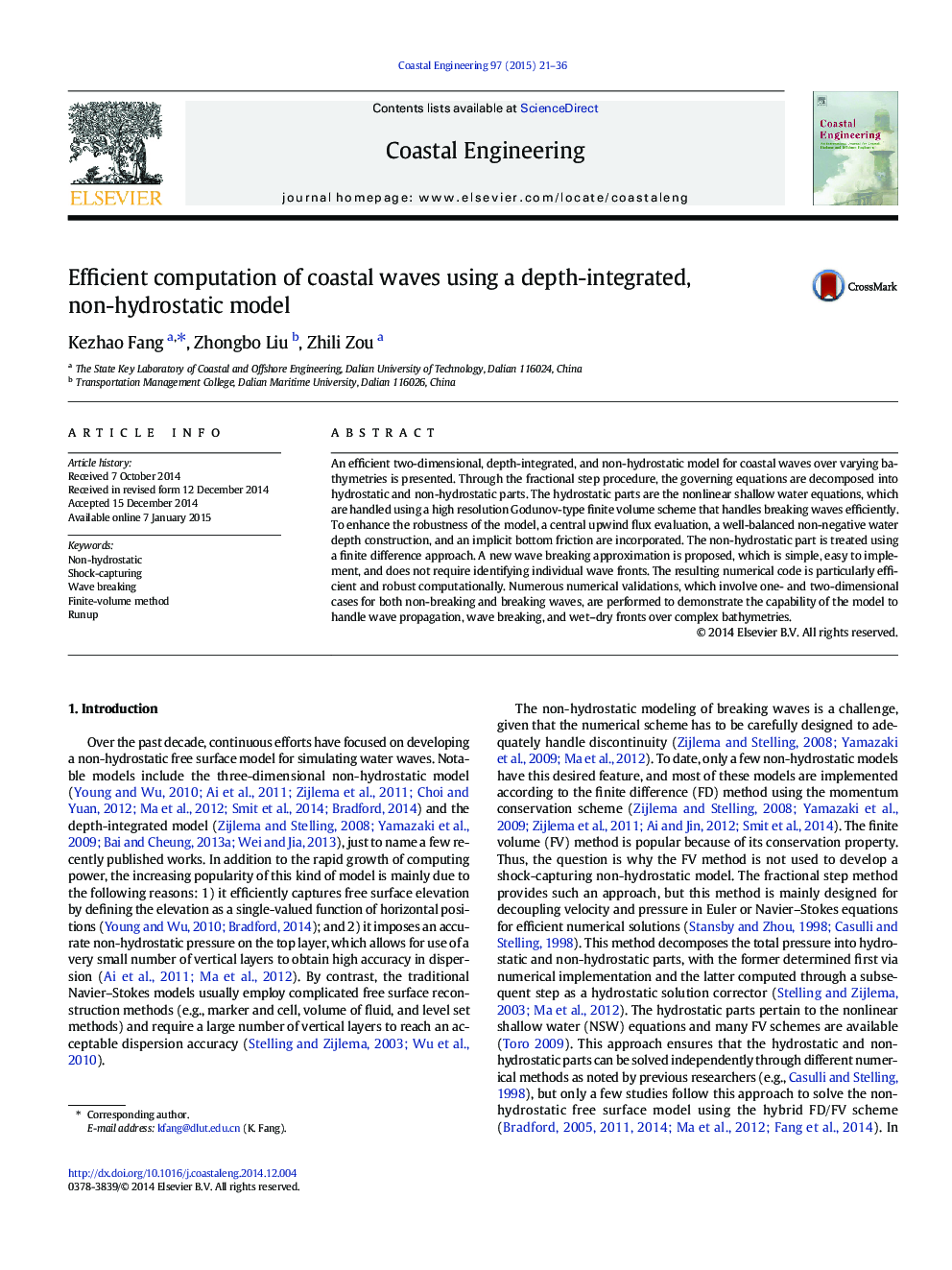| Article ID | Journal | Published Year | Pages | File Type |
|---|---|---|---|---|
| 1720800 | Coastal Engineering | 2015 | 16 Pages |
•A hybrid shock-capturing method is proposed to develope non-hydrostatic model.•The upwind central scheme is used for flux evaluation.•Efficient treatments to wave breaking, wet-dry fronts and bottom friction.•A new wave breaking method is proposed.•Promising performance of the model has been observed.
An efficient two-dimensional, depth-integrated, and non-hydrostatic model for coastal waves over varying bathymetries is presented. Through the fractional step procedure, the governing equations are decomposed into hydrostatic and non-hydrostatic parts. The hydrostatic parts are the nonlinear shallow water equations, which are handled using a high resolution Godunov-type finite volume scheme that handles breaking waves efficiently. To enhance the robustness of the model, a central upwind flux evaluation, a well-balanced non-negative water depth construction, and an implicit bottom friction are incorporated. The non-hydrostatic part is treated using a finite difference approach. A new wave breaking approximation is proposed, which is simple, easy to implement, and does not require identifying individual wave fronts. The resulting numerical code is particularly efficient and robust computationally. Numerous numerical validations, which involve one- and two-dimensional cases for both non-breaking and breaking waves, are performed to demonstrate the capability of the model to handle wave propagation, wave breaking, and wet–dry fronts over complex bathymetries.
